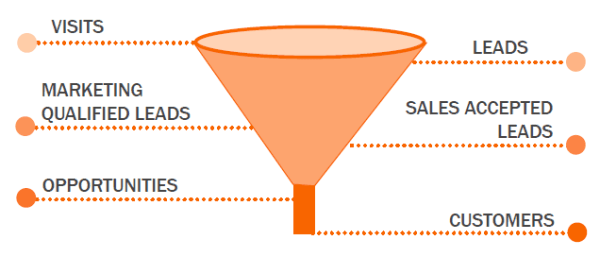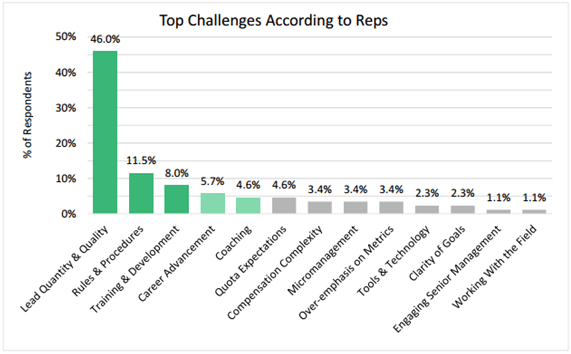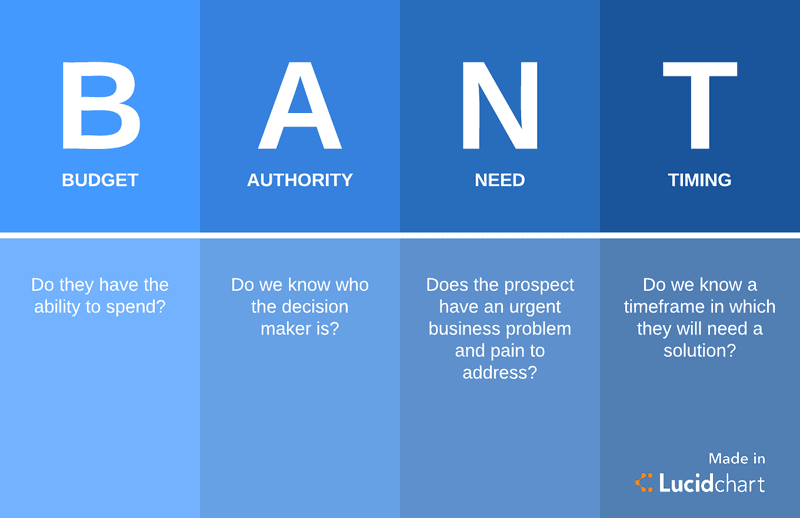Qualificazione dei lead: Come qualificare i vostri lead B2B e migliorare il vostro processo di vendita
Masterclass sulle pipeline di vendita: Quinta parte

You’re starting to warm up your leads, booking demos and running sales meetings. But how do you know a lead is worth the effort or whether the best course of action is to nurture a lead after your first meeting? That’s where lead qualification comes in.
This post is Part Five in a new Masterclass series on how to build your sales pipeline. Building a strong sales pipeline is the #1 key to sales success. That’s why we created this indispensable step-by-step guide, to teach you how to build your pipeline the right way.
– Jeroen Corthout, Co-Founder Salesflare, an easy-to-use sales CRM for small B2B companies
In this fifth part of the series, we’ll be explaining the concept of lead qualification, why it’s so important for B2B sales and how you can qualify your leads in the best way.
1. Che cos'è la qualificazione dei lead?
Per qualificazione del lead si intende il processo che consente di determinare se un prospect corrisponde al profilo del cliente target, se ha la possibilità di diventare un cliente e, soprattutto, se ha la possibilità di diventare un cliente di successo e a lungo termine.

2. Perché è importante la qualificazione dei lead?
Imagine you run a marketing campaign on Facebook and LinkedIn to generate leads. Apart from the campaigns you run, you also receive a steady influx of organic leads from your website. In total, you end up with a list of about 100 people who seem interested in what you’re offering.
Come potete sapere quali di questi potrebbero diventare vostri clienti a lungo termine?
Potreste ovviamente iniziare a guardare il primo lead che avete generato, ma quando arriverete all'ultimo, c'è il rischio che abbiate perso l'opportunità di impegnarvi con qualcuno che in quel momento era altamente motivato a usare il vostro prodotto.
Come suggeriscono i dati, solo 25% di lead si qualificano come clienti ideali di un'azienda e ben 75% di questi non si convertono mai. Lo stesso studio afferma che circa 73% dei lead generati dalle aziende online non sono pronti per la vendita e circa 50% sono qualificati ma non disposti ad acquistare.
In parole povere, ignorare la qualificazione dei lead porterà a:
1. Tempo sprecato
If you’re not qualifying your leads before booking your sales meetings, you’ll end up wasting a lot of time following up with those which aren’t a good fit for your company.
For instance, you might end up chasing a prospect that doesn’t have the budget for what you’re offering. Even if you run multiple sales meetings with this lead, you’ll never be able to close the deal.

2. Perdita di opportunità
Some of your best leads may require more effort and lead nurturing to convert. If you’re wasting time following up every lead you generated, you’re going to end up losing opportunities.
The market-fit leads get lost when you wait too long with following up or don’t follow them up at all because you were trying to convert a cold lead. If you don’t know who is worth the effort or who is your high-value prospect, you’ll just lose your chance to sell to them at the right time.
3. Closing deals that don’t last
Approaching all the leads in your pipeline might result in a few sales. But chances are you’ll end up closing more short-term deals hereby leaving more lucrative long-term deals on the table.
This often happens when you’re giving commission or setting targets for the sales people. They then focus on closing deals that will only give short-term value for both the customer and your company. This can partly be solved by creating clear qualification criteria, so that sales people don’t focus on leads that don’t fit your ideal customer persona.
Gli svantaggi di non investire tempo e risorse nella qualificazione dei lead sono chiarissimi. Detto questo, ci sono ancora 46% aziende che lo trovano difficile.

According to Steven Tulman, about 67% of your lost sales are caused by leads that weren’t qualified.
Come qualificare efficacemente i lead in modo che il vostro approccio alle vendite rimanga ottimizzato e focalizzato sulla crescita del mercato?
3. Metodologie di qualificazione dei lead per le vendite
Sebbene l'estrazione di tutti i dati possibili sul lead sia la strada da seguire, c'è un processo da seguire per assicurarsi di avere tutti i set di dati giusti per qualificare un lead. Questo è il motivo per cui IBM ha creato il framework BANT.

Let’s walk you through the framework, how it works and why completing each step here is important.
1. Identificare i mezzi del vostro vantaggio (budget)
The very first parameter on which you should be qualifying a lead is whether they will be able to afford the solution you’re offering or not. Reaching out to a lead that does not have the budget for your solution, hoping they will set some aside, is a shot in the dark that may end up wasting time and effort.
A few important questions to identify a lead’s budget for your solution:
- Quanto stanno già spendendo in questo momento per il problema che affrontate?
- Da chi proviene il budget (vendite, marketing o altro)?
- Quanto costerebbe loro costruire una soluzione da soli?
- Quanto perdono ignorando il problema?
- What’s the ROI they are hoping to see?
- Qual è il budget stabilito per l'acquisto?
- Il prezzo gioca un ruolo importante nella loro decisione di acquisto?

2. Il processo decisionale (Autorità)
In our previous post we mentioned how there are on average 6.8 people part of each B2B sales deal. That is why it’s important for you to know if you’re talking to the right person. If you’re not, your opportunity is not that qualified – unless of course you manage to get in touch with the right person through the current person or through further networking.
A couple of questions that will help you identify if you’re speaking to the right person:
- Che ruolo ha il protagonista nel processo decisionale?
- Quante persone/dipartimenti sono coinvolti?
- Chi è il decisore finale?
- In che modo l'azienda/il dipartimento prende una decisione?
- Quali sono le preoccupazioni del decisore?
- Chi sarà il punto di contatto per l'implementazione o la supervisione del prodotto?
- Quando vogliono iniziare a usare il prodotto?
- Su quali metriche dovreste valutare il successo?
3. Comprendere i bisogni (necessità)
Il passo successivo consiste nel comprendere le esigenze del vostro potenziale cliente. Dovete cercare di identificare i loro obiettivi aziendali, le sfide che devono affrontare e quindi offrire loro le vostre soluzioni.
After all, a successful sales meeting is when you’re able to understand the prospect and fulfill their needs. But to do so, you need answers to the questions below:
- Come sono venuti a conoscenza della vostra azienda e del vostro prodotto?
- Quali sono le principali sfide che il leader deve affrontare?
- Quali sono le sfide che l'azienda deve affrontare?
- Are any of the business’ problems urgent?
- Quali sono gli obiettivi che vogliono raggiungere?
- In che modo i loro obiettivi vanno a vostro vantaggio?
- Cosa li ha spinti a cercare soluzioni?
- Quali caratteristiche ritengono che la soluzione debba avere e perché?
4. Misurazione della tempistica (Timing)
Be it the budgets, approvals or comparisons, there can be multiple factors that influence the buying process. In order to keep your sales processes optimized, it is important to understand the prospect’s place in the buying journey and their timeline leading up to making the purchase.

Un prospect che sa che avrà bisogno della vostra soluzione tra 3 mesi è meglio di uno che dice che potrebbe averne bisogno un giorno in futuro. In base al vostro processo di vendita e agli obiettivi aziendali, dovrete decidere quale lasso di tempo è accettabile per voi.
A few questions that will help you identify the prospect’s time frame:
- Quali altri problemi/sfide stanno affrontando?
- What’s the priority on the issue you are solving?
- Quando pensano di affrontare il problema che risolvete?
- Stanno prendendo in considerazione altre soluzioni?
Now to take your lead qualification process a step further than BANT…
5. Profilazione del cliente (fase bonus!)
Here’s where you put your defined target audience and ideal customer personas to good use. Compare your leads with the characteristics you listed in the persona to see if they match your ideal customer.
Alcune domande importanti a cui dovreste avere una risposta:
- Quanto il lead corrisponde al vostro cliente ideale?
- In quale settore operano?
- Da quanto tempo l'azienda è in attività?
- Quali sono le dimensioni dell'organizzazione in termini di clienti, dipendenti e fatturato?
- Si trovano nel vostro mercato di riferimento?
- What’s the ideal use case of your product for them?
- Cosa li rende inadatti al vostro prodotto? (Segnali da tenere d'occhio)
Potreste chiedervi se i vostri potenziali clienti saranno disposti a rispondere a tutte le domande di cui sopra. La realtà è che non tutte le domande riceveranno una risposta, ed è per questo che è necessario raggrupparle in modo intelligente.

Make sure your questions don’t give off the impression you haven’t done your research. You don’t want your lead to feel negatively towards you, nor for them to be confused or overwhelmed at any stage of the sales process.
4. Qualificare i lead per guidare le vendite
La qualificazione dei lead non segue un approccio univoco. Ogni azienda ha esigenze diverse e un mercato diverso a cui rivolgersi, che cambia al proprio ritmo.
Per questo motivo, il vostro processo di qualificazione dei lead deve evolversi insieme alle mutevoli esigenze del mercato e ai vostri obiettivi aziendali. Vi aiuterà inoltre a mantenere in salute la vostra pipeline, a prevedere le tendenze dei consumatori e a fare previsioni concrete che possono essere utilizzate per ottimizzare i processi di vendita e ottenere conversioni più elevate.
Ricordate: qualificatevi sempre prima di vendere.
Ready to start qualifying your leads? Well, don’t forget to tune in next week for Part Six in our Sales Pipeline Masterclass: How To Nail Sales Pipeline Management Like A Pro. Need a refresher? Go back and read Part Four: How To Book And Run Sales Meetings Like A Pro.

Speriamo che questo post vi sia piaciuto. Se vi è piaciuto, spargete la voce!
👉 Potete seguire @salesflare su Twitter, Facebook e LinkedIn.
- 4 strategie di vendita B2B che garantiscono di portare più clienti - 23 Gennaio 2024
- Come le aziende B2B possono integrare gli strumenti di vendita - 18 Aprile 2019
- Come le aziende B2B possono automatizzare i dati dei clienti - 11 Aprile 2019
